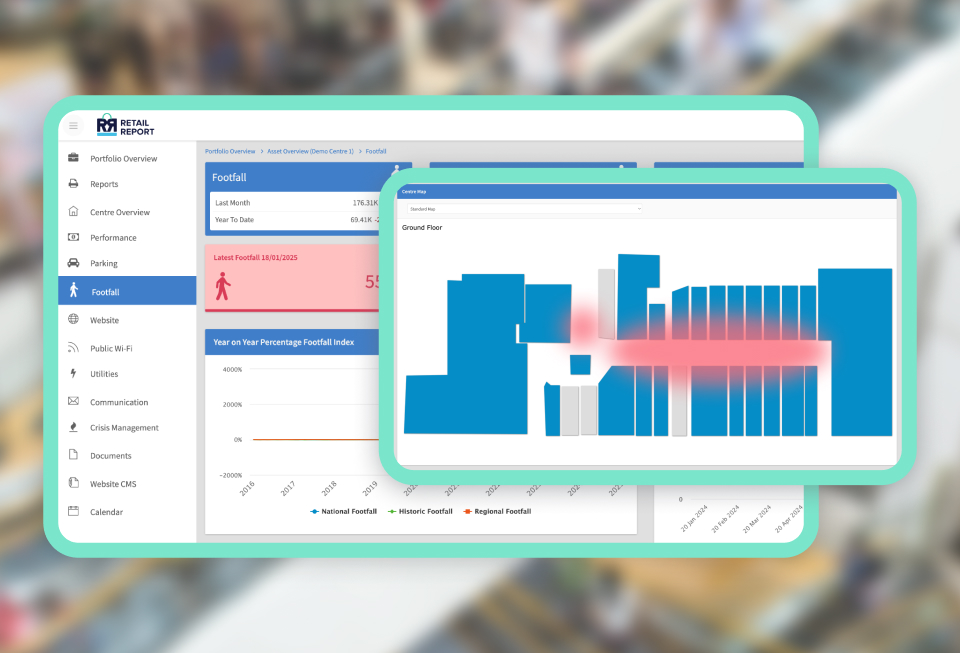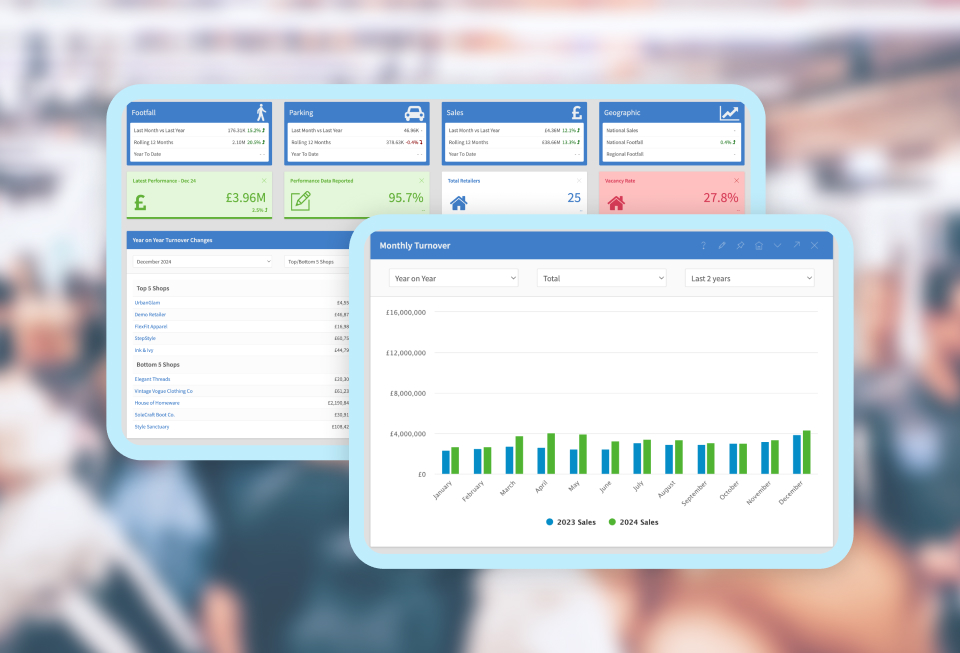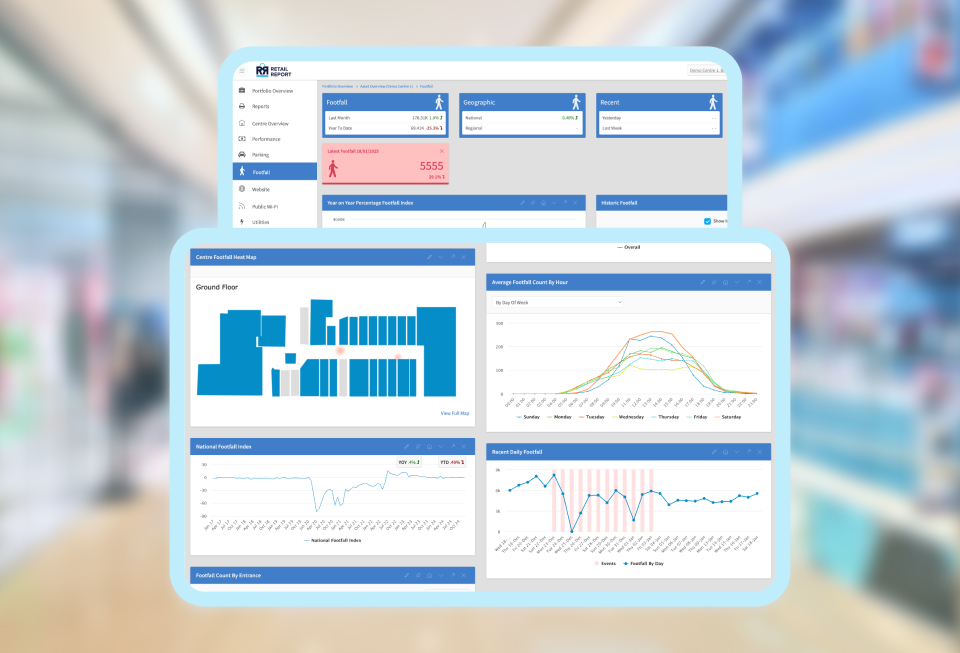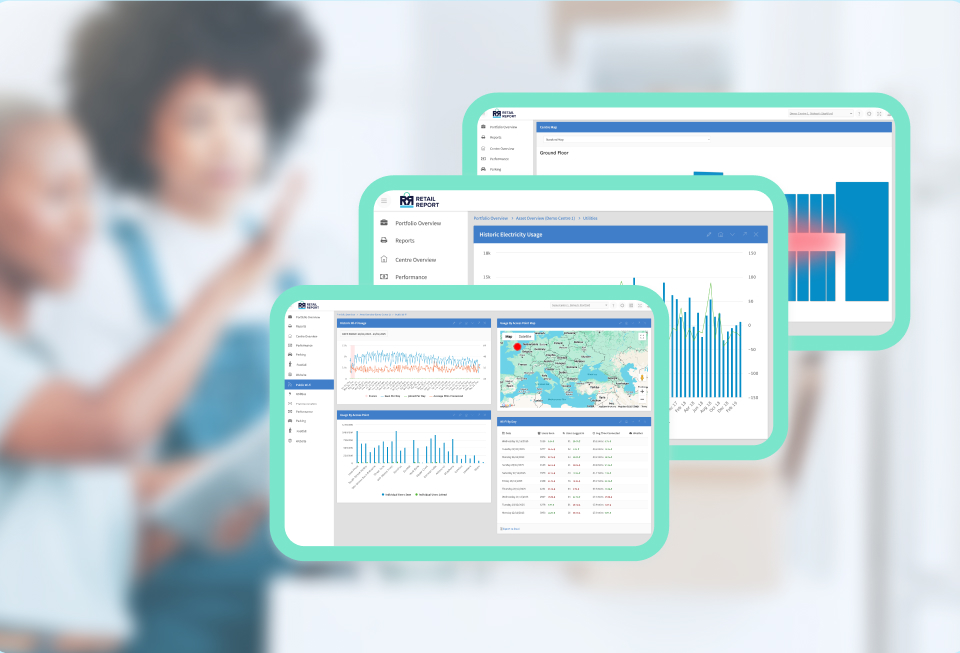The rise of retail analytics is one of the most important trends that’s revolutionising the industry. In the competitive world of retail, staying ahead of the curve requires strategic, data-driven decision-making. As a result, retail analytics has become an indispensable part of the modern retail ecosystem, transforming the way shopping malls operate and propelling them to new heights.
In this article, we explore five high-value retail analytics use cases and how they can help your shopping mall remain relevant and thrive.
What is retail analytics?
Retail analytics is the process of collecting, analysing, and reporting performance data across your property portfolio. The sources of this data are endless – POS systems, footfall counters, car park systems, public WiFi, and much more.
Retail analytics transforms raw data into invaluable insights, helping you identify trends, understand customer behaviour, and unlock hidden opportunities. This is vital to effective shopping mall management, enabling you to make better-informed decisions.
Why is retail analytics important?
Over the past decade, the retail industry has faced a perfect storm of challenges. COVID-19 was a huge blow for physical retail. While shopping malls remained closed during multiple lockdowns e-commerce surged and accelerated digital transformation. The subsequent cost-of-living crisis and supply chain disruptions further squeezed brick-and-mortar retail.
If that wasn’t enough, consumer expectations and preferences are constantly changing. Today’s consumer craves more than just products – they seek out experiences and memories.
To survive and thrive, shopping malls must adapt to these changes and face them head-on. Retail analytics plays a key role in this process, providing data-driven insights that help malls refine their strategies, overcome challenges, and stay ahead of the competition.
Let’s dive into some analytics use cases in retail:
Top five analytics use cases in retail
1. Boost footfall and sales
Retail analytics provides invaluable insights to inform decisions that enable you to get the most out of your locations. This retail analytics use case has a direct impact on business performance and ultimately, your bottom line.
To stay ahead of the competition and ensure long-term success it’s best to upgrade to a retail analytics software solution like Retail Report. Integrating your systems with Retail Report gives you a comprehensive understanding of customer behaviour. Features such as built-in heatmaps identify high-traffic and under-performing areas, while detailed reports highlight peak and off-peak times. Comparing the data with regional and national trends, and factoring in variables such as weather and events provide further insights.
By identifying footfall patterns and peak traffic periods you can better understand how customers interact with different parts of your shopping mall. This insight allows you to improve tenant placements, layout designs, and marketing strategies to boost footfall and sales.

2. Increase marketing ROI
Shopping malls can significantly enhance their marketing return on investment (ROI) by using retail analytics to gain deeper insights into consumer behaviour and optimise their marketing strategies.
For example, Retail Report allows you to track footfall traffic and identify peak hours so you can time your marketing campaigns more effectively. Nailing down the timing ensures your promotional messages reach the largest audience during high-traffic periods.
Retail Report also shows the direct impact of promotional events and campaigns on footfall traffic. By identifying what’s working and what’s not you can adjust your strategies to ensure maximum ROI on your marketing budget. Additionally, you can use this data to gain stakeholder buy-in for new marketing initiatives.

3. Gain a 360-degree view of your property portfolio
Retail analytics provides shopping malls with a 360-degree view of their property portfolio. This helps stakeholders keep their finger on the pulse, understand key trends and make smarter, data-driven decisions.
With Retail Report, you can integrate all your data sources into a single, easy-to-use dashboard. Effortlessly consolidate footfall, car park numbers, sales figures, and more. This streamlined approach improves the accuracy of your data and reduces administrative burdens for busy on-site teams.
Having a complete overview of your property portfolio helps improve strategic planning. Backed by data-driven insights you can make smarter decisions on how to maximise performance and meet your financial goals.

4. Evaluate tenant viability
Another significant use case is tenant viability. Shopping malls can leverage retail analytics to assess the viability of their tenants and optimise the tenant mix. This helps ensure that your mall remains competitive and financially stable.
By using footfall and sales data you can evaluate your tenants and identify the ones attracting the most shoppers or underperforming. These insights enable them to make data-driven decisions about what retailers are likely to thrive in the space, guiding the decision-making process for future tenant leasing.
You can also use Retail Report’s advanced tools to forecast when a tenant may struggle to meet their rent. These early warnings give you a chance to proactively address issues before they become problematic.
With these insights, you can actively support tenant success and create a more resilient, stable tenant mix within your shopping mall.

5. Improve operational efficiency
Retail analytics plays a crucial role in optimising shopping mall operations. By tracking store performance, footfall traffic, and energy usage, you can identify areas where you can reduce costs and streamline operations.
For example, Retail Report’s footfall dashboard helps you determine peak hours, allowing you to manage resources more effectively. This ensures that you allocate enough resources to maintain an exceptional shopping experience during busier periods and avoid overstaffing when it’s quieter.
Switching to a software solution like Retail Report can further improve operational efficiency. For instance, you can take the pressure off your busy on-site teams with automated data collection and reporting.

Are you ready to unleash the power of retail analytics?
Retail analytics has become a game-changer for shopping malls, enabling them to make smarter, more data-driven decisions in an increasingly competitive landscape. The retail analytics use cases are vast and varied, from driving profitability and delivering returns to optimising operations and minimising risk. As technology continues to evolve, the potential for retail analytics to transform the industry will only grow.